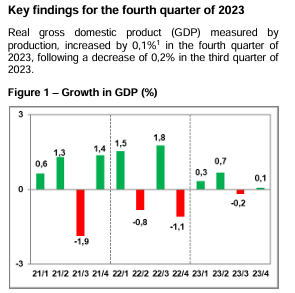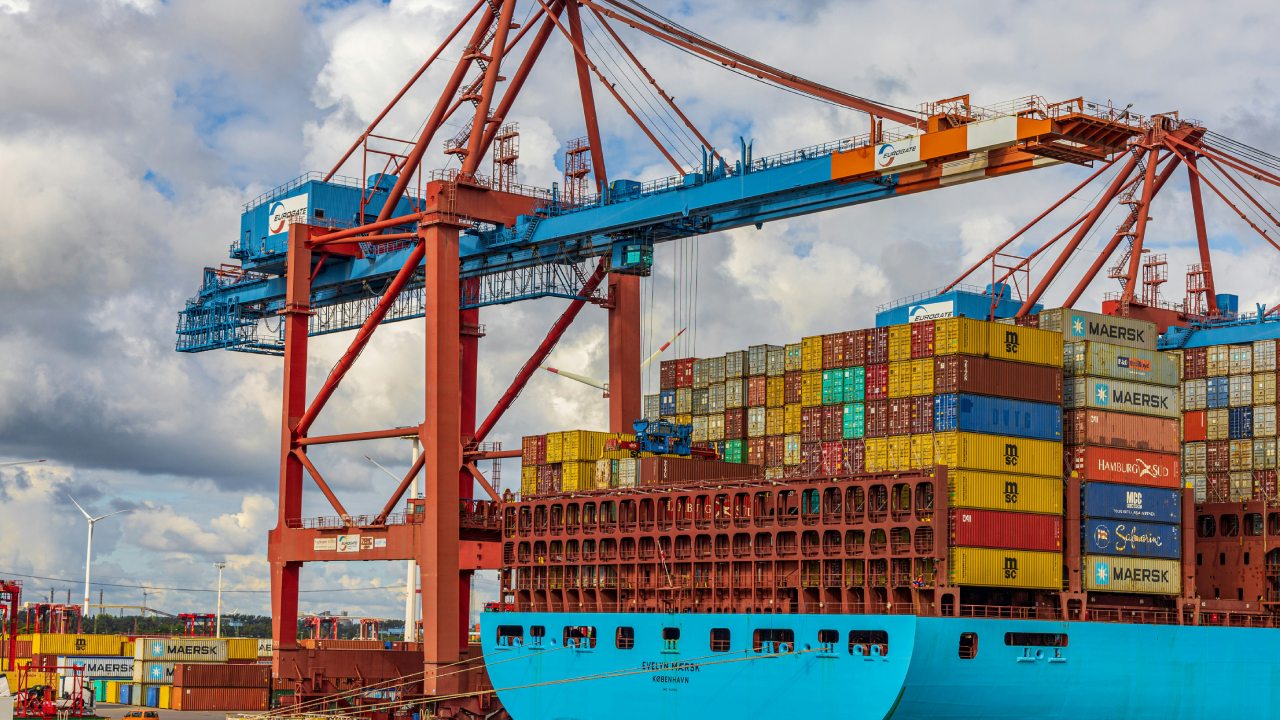- According to Stats SA, South Africa’s gross domestic product (GDP) has grown by 0.1 percent in the fourth quarter of 2023.
- Overall, the country’s GDP growth is slowing, as it increased by 1.9 percent in 2022, but only 0.6 percent last year.
- A wide range of industries are in decline.
The gross domestic product (GDP) of South Africa, a measure of a country’s economic well-being, has seen growth of just 0.1 percent in the last quarter of 2023. The figures are a blow to the ANC-led government, looking to hold on to power after the 2024 general elections expected in May.
Overall, the country’s entire economy expanded by 0.6 percent in all of last year. While this means that the country is not in a recession, the sluggish growth bodes ill for the future, as the population continues to expand. In contrast, the 2023 GDP growth for the United States, a developed nation, was 3.3 percent.
South Africa’s GDP growth in 2022 was 1.9 percent. The latest figures come from Statistics South Africa, which revealed the growth margin on Tuesday morning.

The largest contributor to growth in the fourth quarter of 2023 was the Transport, Storage and Communication industry, which expanded by 2.9 percent. “Increased economic activities were reported for land transport, air transport, transport support services and communications,” explains Stats SA.
Other industries that increased in terms of production in the last few months of 2023 include the mining and quarrying industry, as more mining was seen in the platinum group metals, coal, chromium ore and diamonds.
The personal services and finance, as well as the real estate and business services industries also saw increases in terms of economic activity, which helped keep the GDP in the green. In total, six industries saw positive growth near the end of 2023.
A wide range of industries unfortunately saw a decline in the same period. Including agriculture, fishing and forestry. This was mostly seen in farming, as economic activity declined in terms of field crops and animal products.
The construction industry also declined, with fewer residential buildings spun up, and fewer construction works overall. The trade and catering industry and government services saw decreases too. Meanwhile, South Africa’s net exports contributed negatively to GDP growth in the period.
South Africa is importing more than it is exporting, with increased exports (0.6 percent) in prepared foodstuffs, beverages and tobacco; vegetable products; chemical products; and base metals and articles of base metals, but even larger increases (4 percent) in the import of mineral products, chemical products and vegetables.
Against a population of over 60 million people, growing by two million every four or so years, the sluggish growth bodes ill. Unless the GDP growth in South Africa picks up the pace, there will be less economy to go around for more people in the near future. This means fewer jobs, and fewer products and services. It means smaller businesses will struggle more in an economy unable to expand beyond single-digit increases.
Developed nations like the US will often grant its population “stimulus packages” to boost economic growth and combat unemployment. In 2020, the US gave millions of its citizens once-off direct payments of up to $1 400 (~R26 602.27) to boost consumption, and thus boost GDP growth in the face of the COVID-19 pandemic.
South Africa’s version of this was the introduction of the SRD SASSA Grant, of up to R350 per month. However, this grant was to stave off the harshest effects of poverty, while the US stimulus in 2020 was to boost spending.
[Image – Photo by Dominik Lückmann on Unsplash]

